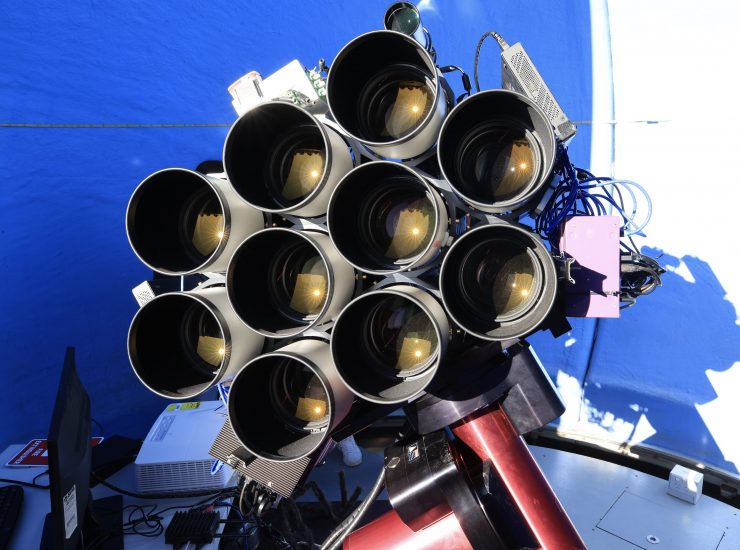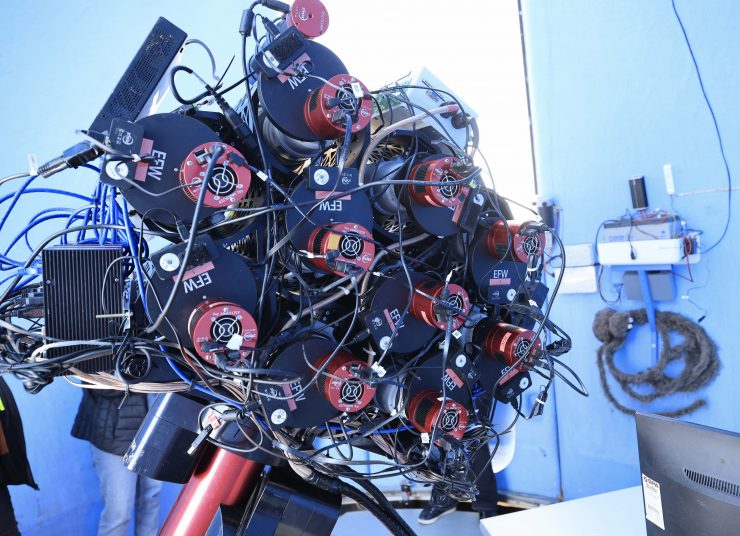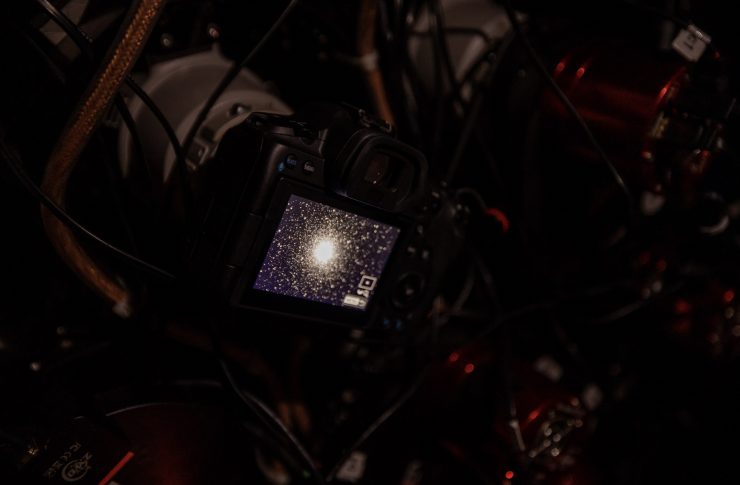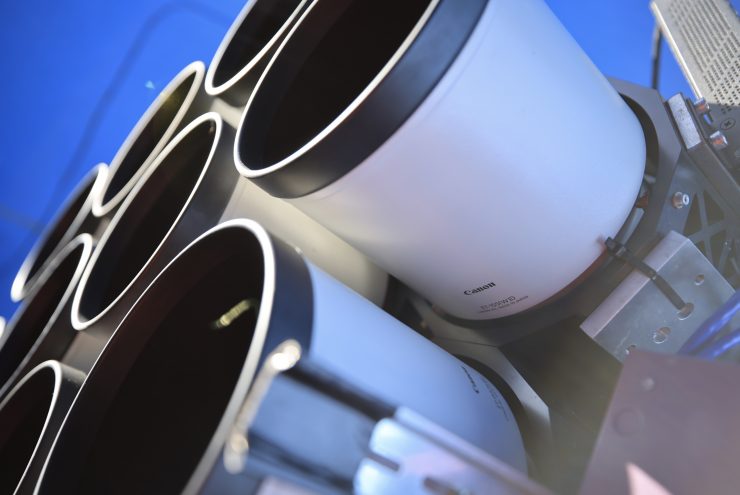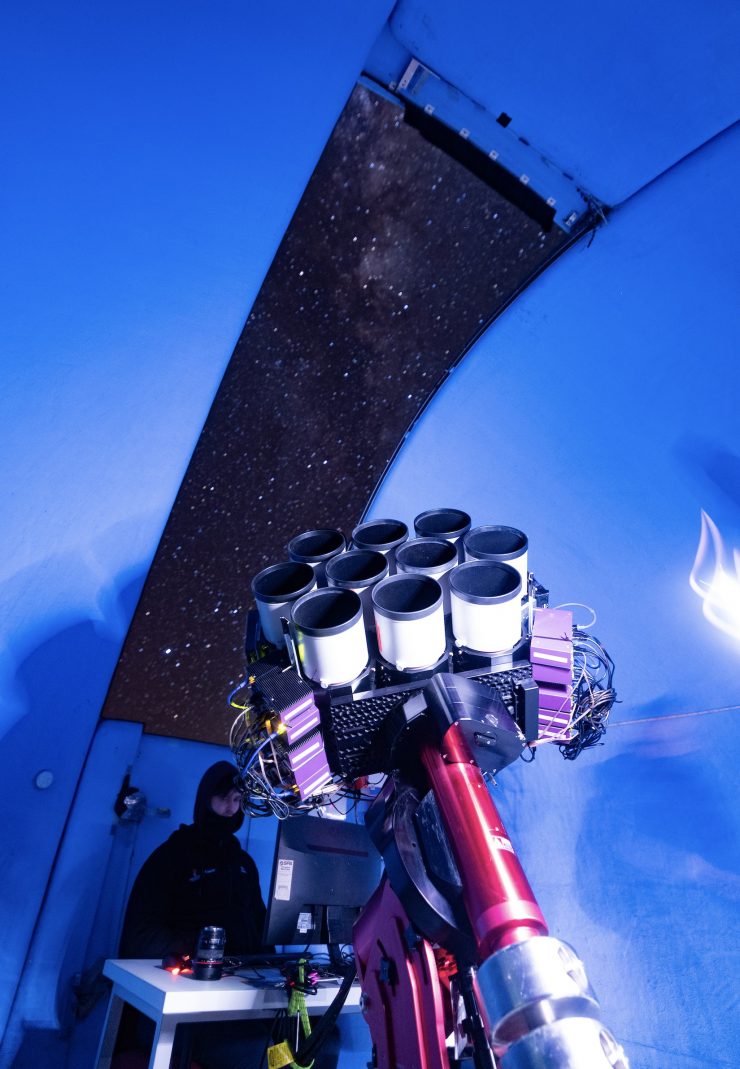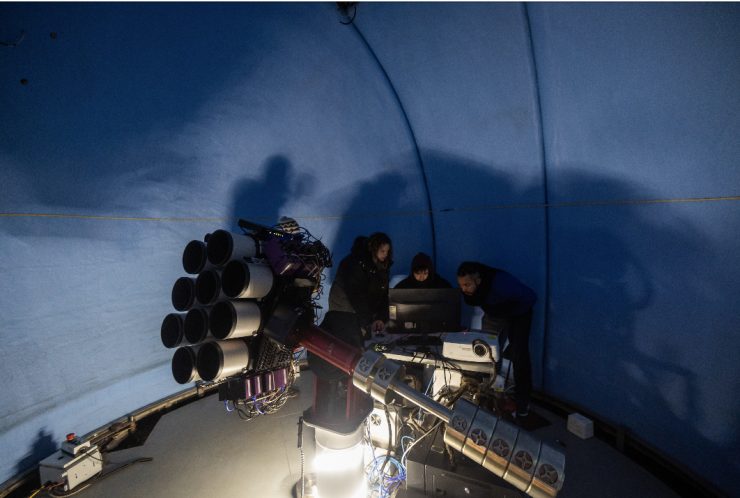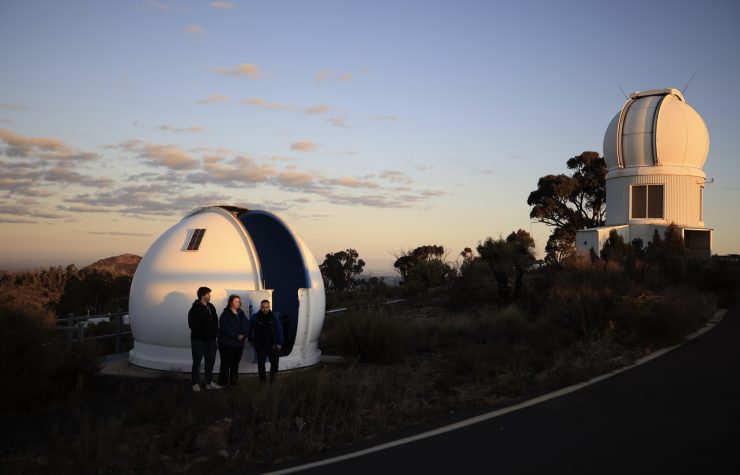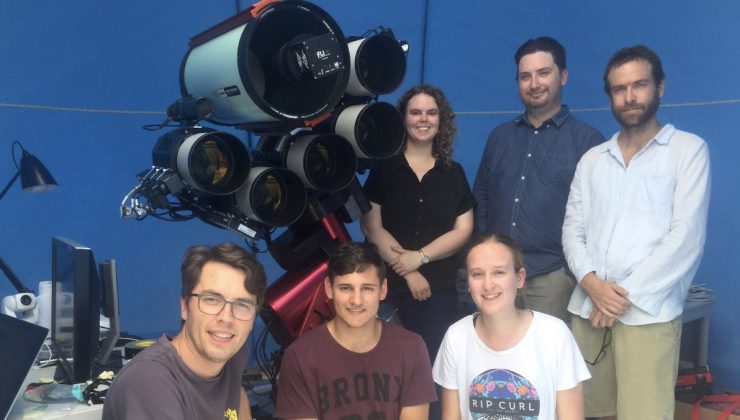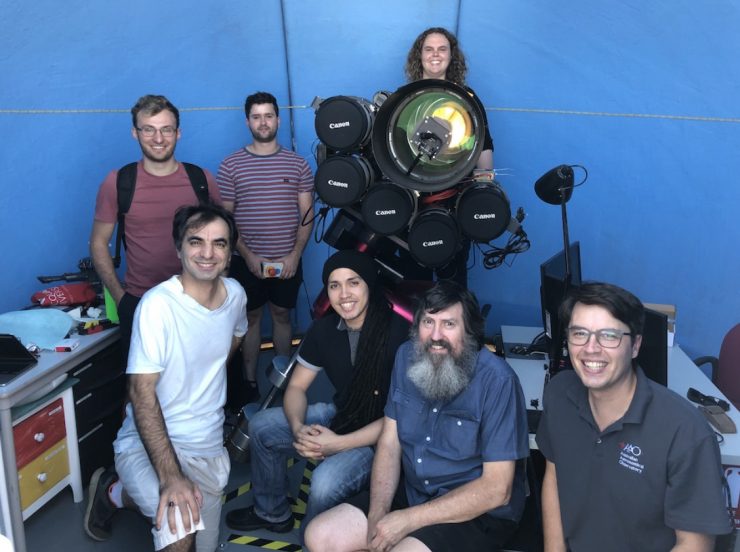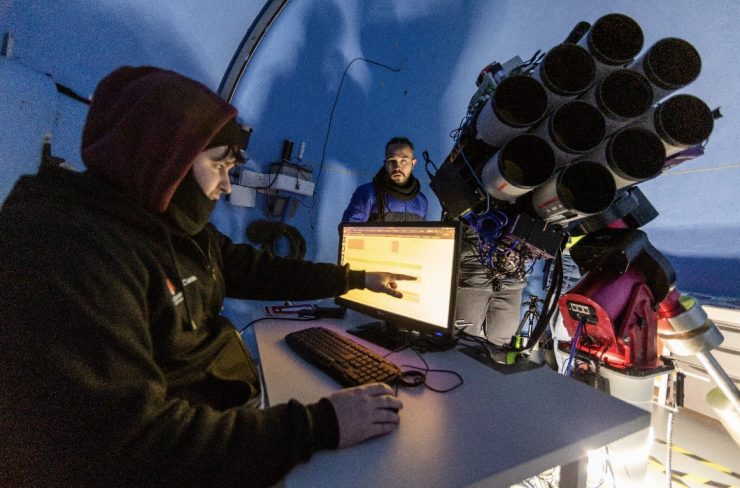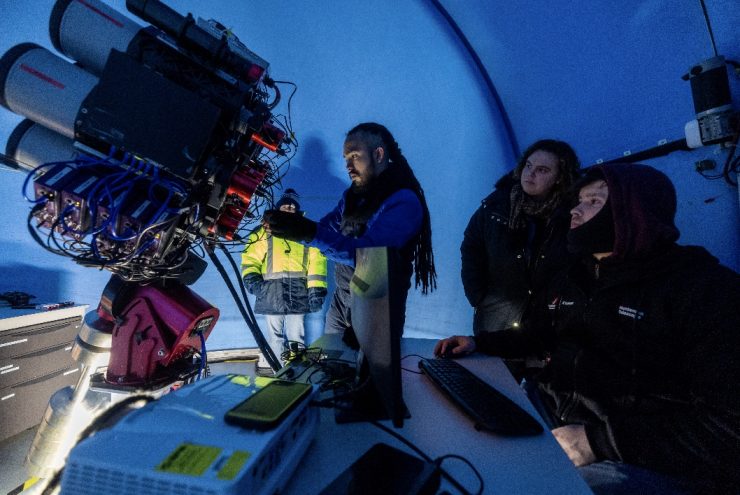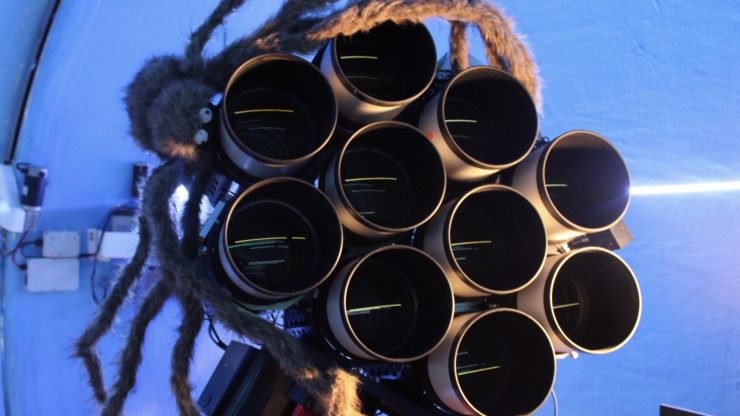
Australia’s Macquarie University with support from Canon Australia has today unveiled the Huntsman Telescope. This is a novel telescope concept designed to ‘hunt’ for and study ultra-faint galaxies and astronomical objects in the Southern Sky.
The Huntsman Telescope comprises an array of 10 commercially available Canon EF 400mm f/2.8 L IS II super-telephoto lenses that are attached to ZWO cameras. The Huntsman Telescope is the only telescope of its kind in the Southern Hemisphere.
Located at the Siding Spring Observatory near Coonabarabran, NSW, the Huntsman Telescope will perform deep southern sky surveys to provide researchers with a unique understanding of galaxy formation and evolution; how galaxies form, how they grow, how they engage with structures that surround them, and what happens when galaxies collide. This information could help determine the fate of the Milky Way with Scientists theorizing that our Galaxy is on course for a head-on collision with the Andromeda Galaxy in around 4.5 billion years.
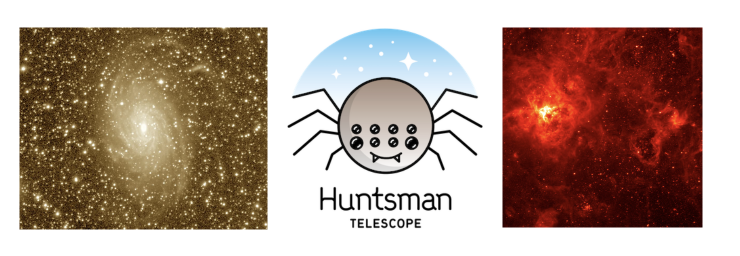
Huntsman will help answer some outstanding questions in modern astrophysics research:
- Galaxy formation and evolution, including stellar disk formation
- Galaxy growth through the assembly of satellite galaxies
- Mitigating and understanding gas turbulence in the Galactic interstellar medium
- Understand the relationship between stellar and cold neutral hydrogen gas assembly
- The number of long-period exoplanets around TESS stellar systems
The Huntsman Telescope was inspired by the innovative Dragonfly Telephoto Array, based in the United States.

The team chose to use Canon EF 400mm f/2.8 L lenses because of their anti-reflection properties, owing to one of the first applications of Canon’s patented nano-fabricated coatings with sub-wavelength structures on optical glasses. The coated lens array contrasts to a conventional mirror telescope, whose imperfectly polished surface can introduce subtle errors that ruin faint, extended structures surrounding galaxies
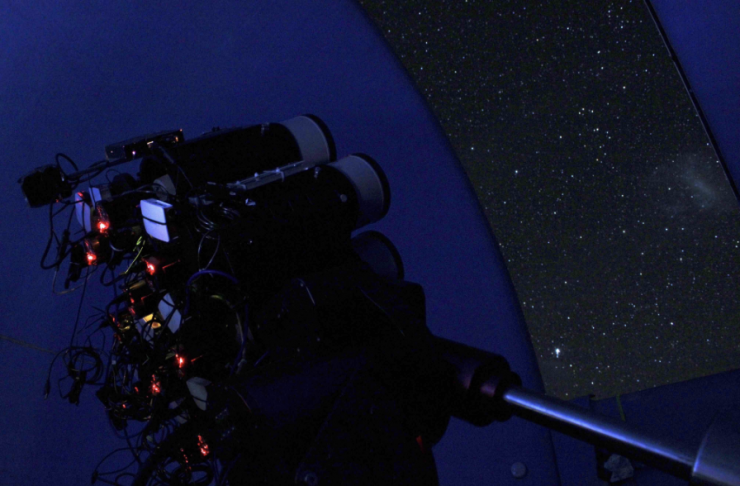
Each lens in the array is equipped with a single monolithic wide-field detector covering six square degrees. With multiple redundant lines of sight, the Huntsman is able to achieve extremely accurate modeling of the night sky emission and produce ultra-clear renderings of our universe.
The whole concept behind the Huntsman Telescope was that it was entirely built from off-the-shelf components. Huntsman is an array of 10 telescopes that each has its own computer.
The automated telescope operations use open source code, based upon the PANOPTES Observatory Control System.
Above you can listen to a podcast that was conducted with Macquarie PhD student Sarah Caddy about the recent upgrades to the Huntsman Telescope.
The Huntsman Telescope project is a jointly-led project from Macquarie University School of Mathematical and Physical Sciences and the Australian Astronomical Optics Macquarie, both within the Faculty of Science and Engineering at Macquarie University. The project is supported financially by a Discovery Project awarded through the Australian Research Council.
The Huntsman Telescope will be open to the public on 1 October 2022, as part of the annual StarFest.

